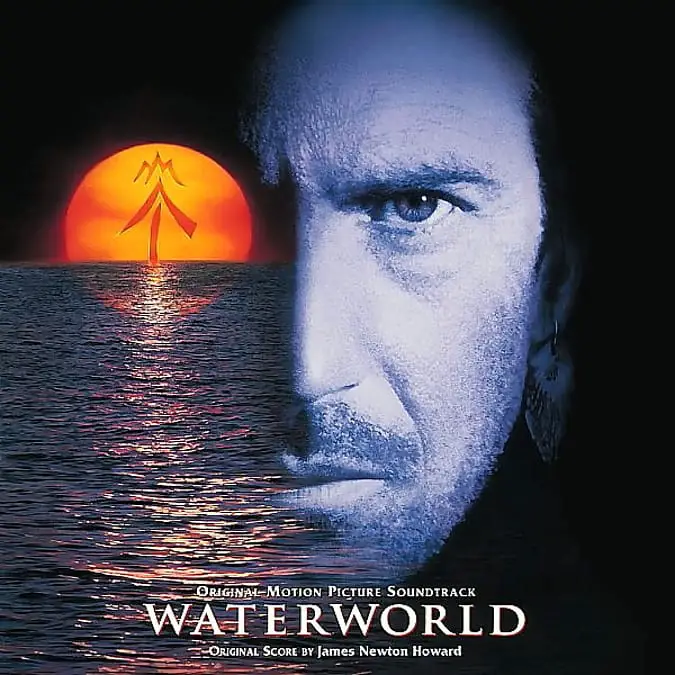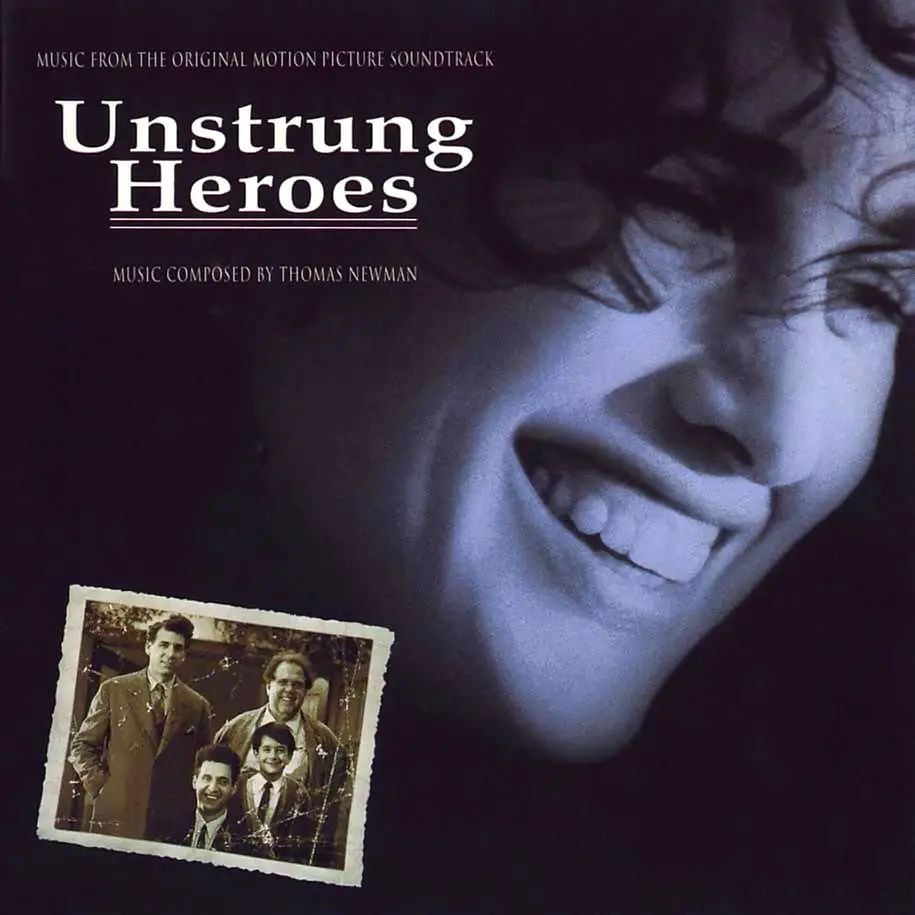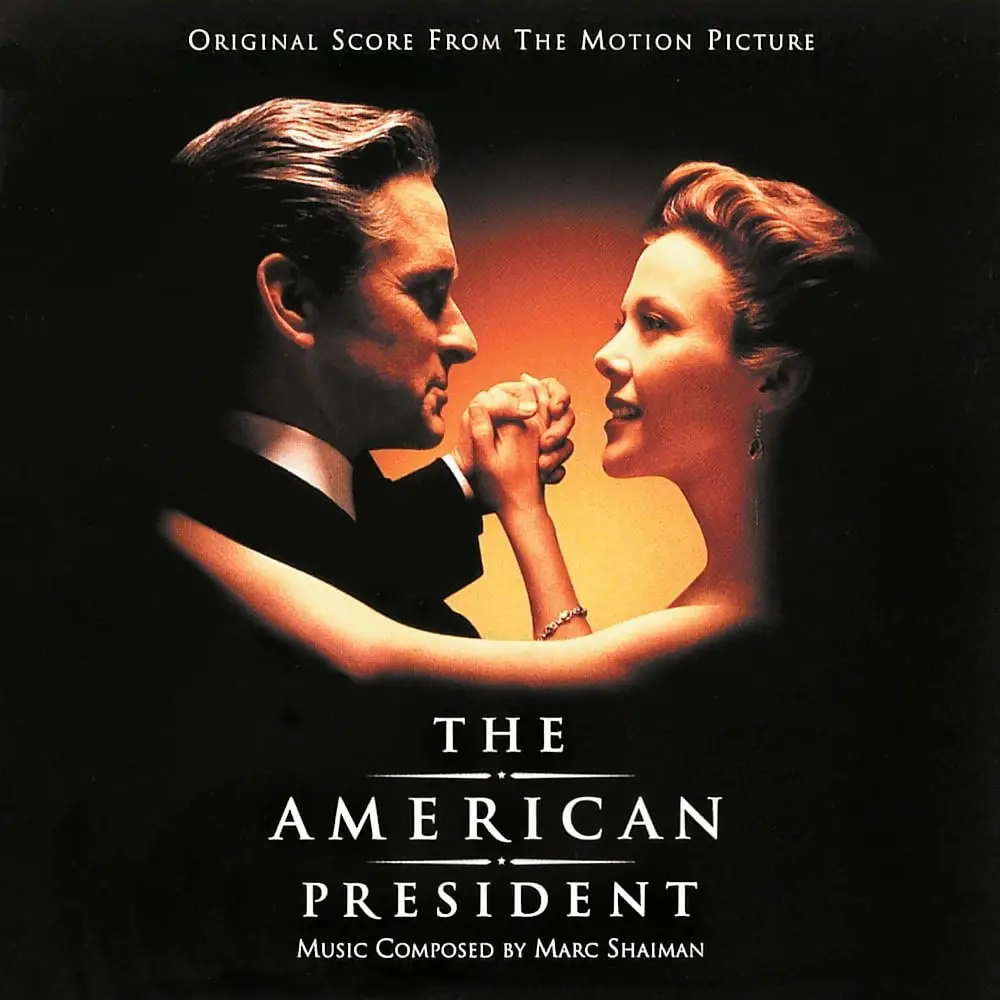1995 was a glorious year for film scores, especially considering the movies that were being made during this time period. Studios at the time weren’t even considering making comic book movies. In fact, they wanted nothing to do with them as they felt there just wasn’t an audience out there. For real! New Star Wars movies were still nearly half a decade away. The big-name composers were working mainly for big-screen projects, as there was no such thing as Netflix. The internet was in its infancy so there was no way to listen to your favourite composer’s tracks in, for example, a YouTube playlist. During this period if you wanted to listen to, appreciate and own a film composer’s score you had to actually go to a theatre to watch the movie or/and buy the actual CD soundtrack.
Still, it wasn’t that much different from today. Most of the big-name composers who were writing amazing work in 1995 are still doing so now in 2020! Composers such as John Williams, Hans Zimmer, James Newton Howard, Howard Shore and others are still as in-demand and busy as ever (Zimmer is slated for four mega-movies this year alone). Sadly, the composer on this list who experienced the most productive year of his career with six movies in 1995, James Horner, was killed in a tragic flying accident in 2015. No doubt that if Horner was still with us, he would not have slowed down any either.
Casper by James Horner

Usually, a film composer is lucky to be given the opportunity to score at least one or even maybe two huge big-budget studio movies in any given year. In 1995 James Horner scored three within a single six-week period. In June of that year, Horner provided the music for Ron Howard’s space drama Apollo 13 and Mel Gibson’s Scottish epic Braveheart. Both movies would go on to earn major acclaim. With those two blockbusters opening around the exact same time, it’s easy to overlook the film that Horner scored a month earlier—Brad Silberling‘s comedy/fantasy Casper, produced under Steven Spielberg’s Amblin company.
One would think with Braveheart and Apollo 13 on his plate, Horner’s work on Casper would be less inspired, less inventive and less emotional than those for the two prestige projects but it would be a mistake to think that. Horner’s score for Casper is as rich and full and lively as anything else he did that year. In fact, it’s one of his most outstanding works ever.
Casper is full of clever themes and each one is as playful as the next except for the heart of the score, a piece titled “Casper’s Lullaby” played on piano, strings and flute backed by a harmonious choir. This piece represents the loneliness between the movie’s two main characters, Casper the ghost and young Kat (Christina Ricci), who travels so much with her father (Bill Pullman) she’s never in one place long enough to make friends. It’s understandable that in a movie with loud, belching ghosts and just as loud adults, that the music may have been dismissed upon release, but if you’re a fan of Horner’s later work, such as the romantic themes of Titanic, this is one score you should give a listen to. You’ll really be glad you did.
Rob Roy by Carter Burwell

Carter Burwell had developed a reputation as a composer of quirky comedies and odd dramas during the early ’90s. He was known primarily for his collaborations with the Coen brothers and for his work scoring offbeat projects such as Doc Hollywood and Buffy the Vampire Slayer. He was also adept at writing tender scores for dramas such as This Boy’s Life while also writing for comedy hits such as Wayne’s World 2. In 1995 Burwell reteamed with Doc Hollywood director Michael-Caton Jones for Rob Roy, an epic based on the life of the 18th-century Scottish clan chief Rob Roy MacGregor (Liam Neeson), who battles with the unscrupulous nobleman Archibald Cunningham (Tim Roth) in the Scottish Highlands.
Burwell incorporates some of his Miller’s Crossing Celtic flavour in this score while enlisting Celtic folk performer Karen Matheson to perform a vocal variation of his main theme in “Hard Earth” and she also provides a traditional Gaelic song called “Ailein Duinn.” Burwell’s score for Rob Roy (especially the main overture) offers a grandness that, in my opinion, Braveheart lacked for most of that movie’s three-hour running time.
If you haven’t heard Rob Roy yet, definitely find yourself a copy and give it a spin and if you listen carefully you can hear some styles and textural sounds Burwell would provide for the Coen brothers’ masterwork Fargo just one year later.
Waterworld by James Newton Howard

Waterworld had a rough swim to the screen before it opened in the summer of 1995. Its behind-the-scenes turmoil is now the stuff of movie legend due to its ever-expanding budget, its last-minute re-casting of major roles, its fights between director Kevin Reynolds and star Kevin Costner and yes, even the music did not escape falling victim to the tide. Originally chosen to score the movie was the talented composer Mark Isham (Mortal Thoughts, Romeo Is Bleeding) known for jazzy, melodic scores to dramas and thrillers like Quiz Show—but not so much for huge action blockbusters. Costner, in particular, was not keen on Isham’s resulting music and then approached James Newton Howard to write the score to Waterworld. Costner was impressed enough with Howard’s work on 1994’s Wyatt Earp to hand the duties to him, even after he’d just come off Outbreak, Just Cause and French Kiss during the first half of 1995 alone.
It wasn’t going to be easy though as Waterworld required nearly two hours of pulse-pounding action-driven score and Howard had only six weeks to create it. Maybe the pressure was a good thing because the end result was tight and terrific, layered work. A major influence on Howard this time around was Jerry Goldsmith’s action scores, who funnily enough, was more interested in scoring comedies and dramas for much of the ’90s, opening up more opportunities for composers such as Howard to try their hand at action spectacles. Howard incorporated a broader style of composing here than he had for movies such as The Fugitive, which while action-packed, utilized jazz underscore to humanize and ground that movie’s main character.
In Waterworld, Howard employed a kitchen sink approach to the score but as is his custom, still developed a few main intimate themes for the movie’s lead and co-star (played by Jeanne Tripplehorn). When it was released, Waterworld turned out to be a hit, with audiences and critics praising the composer for his work. Despite the stress, the composer considers Waterworld one of his personal favourites and places it among his very best scores ever. Who are we to argue?
Nixon by John Williams

It had been two years since John Williams returned to film scoring after his monumental Oscar-winning work for Schindler’s List in 1993. At the end of 1995, Williams returned with two movies: the remake of Sabrina starring Harrison Ford, and Oliver Stone’s Nixon, a nearly 200-minute depiction of Richard Nixon, the 37th president of the United States who due to scandal was forced to resign from office in 1974.
This would mark the third collaboration between Stone and Williams ending their “American trilogy” series of movies, which began in 1989 with Born on the Fourth of July and continued with 1991’s JFK. Williams applied a more sinister tone to his Nixon music than he had for the previous two movies, which incorporated soaring strings for Born and a sombre yet refined main theme played on piano for JFK. The music for Nixon is more ominous right from the get-go as we hear a suspense-heavy cue that sounds like Williams channelling Bernard Herrmann scoring a Hitchcock thriller. The ominous sounds continue until Williams hurls a thumping, brassy snare trumpet at the listener during the album’s opening track “The 1960’s: The Turbulent Years” which certainly evokes Williams’ “The Imperial March” from The Empire Strikes Back. Nobody but Williams knows if he personally equated Nixon with the dastardly Darth Vader but it’s not entirely improbable.
The score isn’t entirely dark. There is a beautiful piece of Americana presented in the track “Growing Up in Whittier,” which plays over flashback scenes of Nixon as an earnest young man before he entered the political arena. Williams uses a trumpet (performed by Tim Morrison, esteemed trumpet player of The Boston Pops Orchestra, who Williams wrote the Olympic anthem “Summon the Heroes” for), strings, flute and harp for this section of the film. Then, the next track “The Ellsberg Break-In and Watergate” brings us right back to the dirty deeds which led to Nixon’s downfall. This track is reminiscent of the conspiracy cues which featured in JFK thus tying the two movies together musically. Williams and Stone never collaborated again, but these three films, amounting to a whopping nearly 10 hours put together, is certainly a trilogy to never forget.
Something to Talk About by Hans Zimmer

Hans Zimmer may have seemed an odd choice to score this modest Julia Roberts comedy/drama about a wife trying to hold herself together after she catches her husband (Dennis Quaid) cheating on her. After all, Zimmer was at this point working for directors such as Tony Scott and John Woo whose movies were big, loud and explosive. That summer, Zimmer had scored the military action thriller Crimson Tide which was about as far removed from a Julia Roberts rom-com as one could imagine. And while Crimson Tide’s magisterial score was indeed critically acclaimed (Steven Spielberg became a life-long Zimmer fan from hearing that score) his work for Something To Talk About worked on a different level—it exhumed home-spun charm and a great deal of it.
Something To Talk About was written by Callie Khouri who had previously written the Oscar-winning screenplay for Thelma and Louise which was scored by Zimmer in 1991. Four years later, their next collaboration would be smaller in scope even though it starred the biggest female movie in the world at the time.
Zimmer teamed with Graham Prescott to write the score and brought guitarist Pete Haycock on board who had performed previously on Days of Thunder and Thelma and Louise. Also performing is Tim May whose terrific work is featured on the soundtracks outstanding opening track “Dysfunctionally, Yours.”
Something To Talk About is full of the charming Zimmer scores of the early ’90s such as Green Card and Regarding Henry that film score fans hope he’ll someday return to.
Unstrung Heroes by Thomas Newman

Thomas Newman firmly established himself as one of the industry’s most versatile composers during 1994 by scoring two very popular and as it would turn out, more popular movies ever; Little Women and of course, The Shawshank Redemption. Both earned Newman acclaim but sadly no Oscar.
Since then Newman has struck up a long collaboration with director Sam Mendes and with Disney. Before that, Newman spent the second half the ’90s scoring big projects (Meet Joe Black) and small quirky ones, such as the Diane Keaton directed Unstrung Heroes. In fact, this project might be the first one to introduce us to the classic “Newman sound”—that often other-worldly use of odd instruments combined with haunting melodies which force the listener to open their mind and let their heart guide them. If you’re a fan of Newman’s later classics such as American Beauty and the Finding Nemo series you know exactly the sound I’m talking about.
During the ’90s Newman found a new way to score movies the same way Ennio Morricone did for Spaghetti Westerns in the ’60s, John Williams did fantasy movies in the late ’70s and Jerry Goldsmith did for whatever he was asked in the early ’80s. Newman’s quirky little Unstrung Heroes score was so impressive to the Motion Picture Academy it earned him another nomination in 1995 against the heavyweight composers in this list. He wouldn’t win then either but I’m sure he figured one year his time would come. Fans of Thomas Newman are sadly also still waiting.
The American President by Marc Shaiman

December 1995 saw two movies released about American presidents, but unlike Oliver Stone’s Nixon, Rob Reiner‘s The American President was certainly the more optimistic, humorous, and romantic of the two. There are many other differences: Stone’s film is epic in size while Reiner‘s is brisk and intimate. Stone’s film is full of sour, scheming faces while Reiner‘s film is full of bright-eyed smiling wise-crackers, and Stone’s film wallows in the rot of the soul of people in command who are corrupted by power while Reiner‘s film demonstrates that humanity and empathy are admirable virtues to find within those we chose to elect to lead us.
One similarity between the two movies, however, is the music. While Nixon’s music is wonderful in its own right, it is hardly what you might call “uplifting.” The American President by Marc Shaiman (a Reiner favourite from Misery, A Few Good men and North) is wistful, affectionate and idealistic in comparison. Shaiman admirably mixes his romantic and stately themes in a way so the music doesn’t distract from screenwriter Aaron Sorkin’s torrent of witty words. The result is a warm, cozy and agreeable experience that charms the movie viewer.
Shaiman’s score has since often been chosen as a favourite among figure skaters to perform to because of its tender, uplifting power and graceful melody. It has been a staple that studios have used in trailers for their rom-coms during the remainder of the ’90s (and surprisingly even for Spielberg’s Saving Private Ryan) and was obviously a major source of inspiration for the main theme to the NBC series The West Wing which premiered four years later.
Se7en by Howard Shore

Going from one of the most charming movies of 1995 to its most grizzly and horrific just shows what a rich year that year was for storytelling and how different composers are able to work their magic. In 1995 Howard Shore was a few years away from his triumph work on The Lord of the Rings series, but he was still a well-respected composer working primarily in the thriller/mystery genre with the occasional Mrs. Doubtfire comedy comprising his body of work. It’s fair to say that David Fincher’s magnificent Se7en is as far away from a family-friendly project a composer could choose to work on, but Shore certainly added to the murkiness and nastiness of the film with his gloomy, cheerless, ominous and distressing score. And I mean that as a compliment.
After first viewing, one might come away thinking “did that movie even have music?” Yes, it did and it was incredibly effective. Think of some of the more dissonant scores Ennio Morricone was producing in the ’70s especially or even the use of Krzysztof Penderecki’s music in Stanley Kubrick’s The Shining and you might then understand that Shore’s dreadful (in this case meaning actually full of dread and not anywhere near bad) score has gotten under your skin whether you realized it or not. John Doe would be proud.
Apollo 13 by James Horner

The only composer to place twice on this list is, of course, James Horner and it’s no wonder. While Braveheart went on to earn Horner an Oscar nomination, his Apollo 13 score is arguably his greatest triumph that year. In their first film together since 1988’s Willow, director Ron Howard and Horner re-teamed for a story that was as far away from pixies and two-headed dragons as can be imagined. For Apollo 13 they returned to real-life, to Earth—and also outside it.
The film is based on the story of Apollo 13 and NASA astronaut Jim Lovell (Tom Hanks) and his crew who in 1970, left Earth for a Lunar Landing. Three days after launch a faulty wire caused an oxygen tank to explode. Time was running out for the crew in space while NASA struggled with getting them home. The eventual movie of Apollo 13 was certainly a challenge for Horner, but he was more than up for it.
For the main theme, Horner composed a nostalgic and patriotic uplifter which opens the picture using a militaristic snare drum and sole trumpet (performed again by the exceptional Tim Morrison) symbolizing pride and bravery. By the end of the movie, that main theme is performed with a full orchestra including a chorus with British pop performer Annie Lennox lending her voice talents. After triumphant Horner-esque crashes of the main themes at the heroic conclusion and during the end credits music, the composer brings it all back to how the story began—with a haunting, singular and noble rendition of the main theme from Morrison.
In an early scene of Apollo 13, Lovell stands outside in his yard gazing up at the moon and dreaming. After you listen to Horner’s heavenly score, don’t be surprised to find yourself gazing up at the sky while also dreaming.
James Horner had a way of making us do that.


